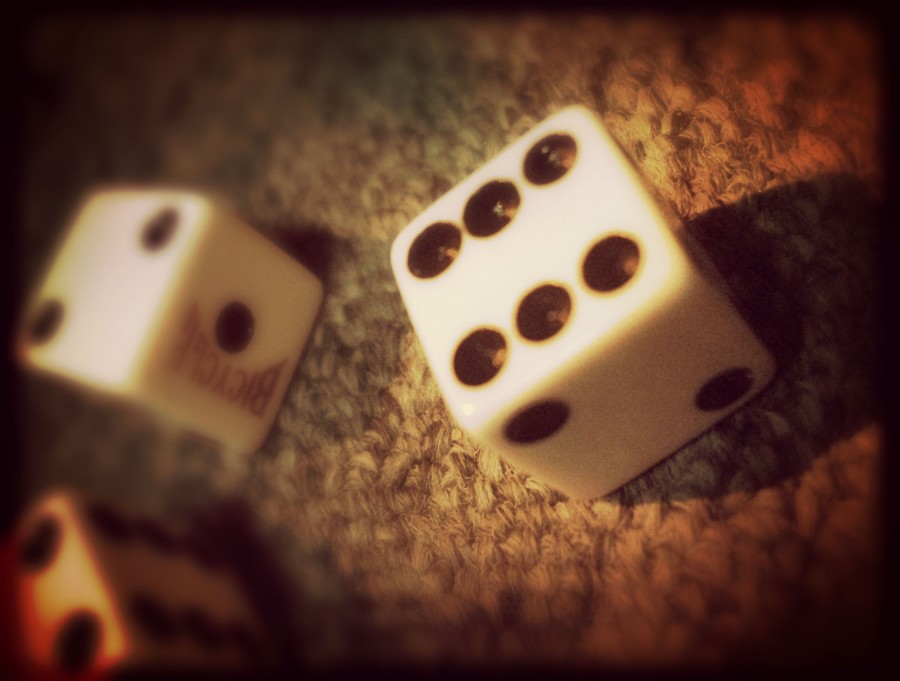I remember when I was eight years old, my sister and I were playing in our backyard. We were digging in the ground when we ran across it. It was the strangest stone we had ever seen. It was completely white and square with six flat faces on it. Each face had a different number of dots on it. I decided to keep it, which made my six-year-old sister very jealous. So I promised her the next thing we found I’d let her keep.
When I continued digging, I found the figurines. There were three of them, and fashioned out of metal. There was one of a human astride and ancient beast known as a horse, a strange, rounded bottom cup, and another small animal.
We took the pieces inside to my mother, hoping to cheer her up. When we showed her our findings, she wept over the pieces, saying that it was from an ancient game she and her sister played as kids. With the mention of Aunt Mary, my sister and I lowered our eyes to the floor.
“I’m sorry,” I mumbled I didn’t mean to make you sad.
Just then she pulled herself out of her chair and knelt on the floor in front of us.
“Now, Jev,” she whispered sliding her arms around me, “you don’t need to apologize. You didn’t know.”
That’s when she told us the story of the game pieces. During the Second American Revolution, my mother and her family had to hide out in an old ramshackle building, which had once been a home. She and her sister found the game hidden beneath the floorboards.
Mother told us that the original game had several other pieces and paper money as well, and was encased in a box made of a substance known as cardboard. My sister and I laughed at the notion of paper money and cardboard, everyone knew those materials didn’t last.
The game my mother had found had one piece of surviving cardboard which had the word “POLY” printed on it in block red letters. They took to calling it that, but their mother told them the real name of it was “MONOPOLY.” It was what they called a board game, named after an ancient business tactic that had long been obsolete.
The object of it was to buy and sell real-estate, which was truly laughable given that inflation was so high, no one could buy anything. The country was in economic upheaval, and when the raging civil war ended the government took control of everything.
My mother’s family took comfort from the tiny metal pieces, creating made-up games with them and making doll dresses from the colorful paper money.
When mother glanced up from her story there was a faraway sad look in her eyes. I knew then she was reliving those days and the memories she had with her sister. A few months before, my Aunt Mary had been shot by a government official for trying to escape the compound where we lived. I’m sure that her death was turning over and over in my mother’s mind, and I wanted so bad to help her.
“Mom,” I whispered gently.
Finally she looked back down and took each of our grubby hands and placed them gently in hers.
She took the horseman piece from my hand and told us he was the cowboy; the cup was called a thimble, and the animal was a dog. The stone, she said, was called a die and was used to count moves. The original game was intended to have two dice and they were to be thrown simultaneously.
My sister and I were fascinated with her story and the game pieces, and she told us to keep them always to remember that this used to be a great country. Then she turned and left the room, so we wouldn’t have to see her cry again.
My sister loved the metal figurines, so I told her to keep them and I kept the die. While growing up it was a symbol of hope. That though many people had died in the civil war and the Great Famine, this tiny piece still survived a reminder of what used to be. Freedom.
I took that die with me everywhere I went, my first day at the Academy, to the frontlines in the Fourth World War. Now that I am old and the world is changing quickly the die is still the same as it always was. I want that one small thing to stay the same forever, and that, my son, is why I’m passing this down to you. It’s the only thing I have to give, the hope of Freedom.



